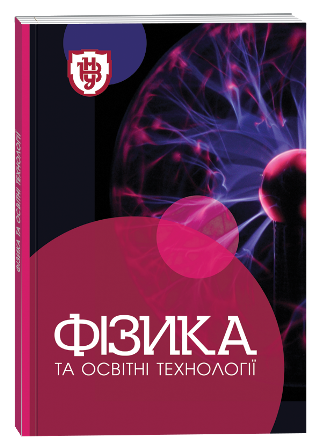MULTISPECTRAL LIDAR SYSTEMS AND THEIR APPLICATIONS
DOI:
https://doi.org/10.32782/pet-2025-1-8Keywords:
multispectral LiDAR, remote sensing, spectral reflectance, point cloud, digital signal processing, geographic information systems, machine learning, environmental monitoringAbstract
The article presents the theoretical foundations of the functioning of multispectral LiDAR (MSL) systems, their hardware implementation, methodological approaches to data acquisition and processing, as well as outlines the key areas of practical application of this technology. The fundamental architecture of MSL is considered, which includes radiation sources operating at various wavelengths, scanning mechanisms, optical receiving modules, photodetector systems, and auxiliary navigation components (GPS/IMU). Particular attention is paid to the use of supercontinuum lasers and frequency doubling techniques to expand the spectral range. It is emphasized that a key advantage of MSL is the capability of simultaneous acquisition of both spatial and spectral information while maintaining high spatial resolution.The potential of MSL in providing accurate spectral discrimination of materials and structural elements based on spectrally sensitive reflected signals is analyzed. The article describes digital signal processing algorithms, including radiometric calibration, atmospheric distortion compensation, and machine learning techniques applied for classification, segmentation, and visualization of multidimensional data. Empirical results indicate a high object recognition accuracy using MSL data, which significantly exceeds the performance of traditional single-wavelength LiDAR systems and passive multispectral imagery.The study outlines the main applied directions for the use of multispectral LiDAR, including agro-monitoring, forestry, geodesy and cartography, environmental monitoring, urban planning, geology, and archaeology. It is demonstrated that the synergy of spatial and spectral data opens new possibilities for interpreting complex natural and anthropogenic systems.Market trends are also analyzed, highlighting a steady increase in investments in the field of MSL technologies and the infrastructure needed for their integration into multisensor platforms. In particular, significant growth of the global LiDAR market is anticipated, which also encompasses the multispectral segment.
References
Leah A. Wasser. The Basics of LiDAR – Light Detection and Ranging – Remote Sensing. NSF NEON. 2024. URL: https://www.neonscience.org/resources/learning-hub/tutorials/lidar-basics (дата звернення 26.03.2025).
Takhtkeshha N., Mandlburger G., Remondino F., Hyyppä J. Multispectral Light Detection and Ranging Technology and Applications: A Review Sensors. 2024. Vol.24 № 5. 1669. https://doi.org/10.3390/s24051669.
Gong W., Sun J., Shi S., Yang J., Du L., Zhu B., Song S. Investigating the Potential of Using the Spatial and Spectral Information of Multispectral LiDAR for Object Classification. Sensors 2015. Vol.15. № 9. P. 21989–22002. https://doi.org/10.3390/s150921989.
Jonathan A. R., Kujawski J., Obland M., Ott M. Multi spectral lidar (MSL). Lidar Technologies, Techniques, and Measurements for Atmospheric Remote Sensing. Edited by Singh, Upendra N. Proceedings of the SPIE. 2005. Vol. 5984. p. 132–139. https://doi.org/10.1117/12.627148.
Fleming S., Woodhouse I. H., Cottin A. Bringing Colour to Point Clouds. Hip International. 2015. Vol. 29 № 2. p. 22–25 URL: https://www.scopus.com/record/display.uri?eid=2-s2.0-84923250731&origin=inward&txGid=874 135284f3f1efb22a59f85bcbb0972.
Kaasalainen, S. 2019. The Multispectral Journey of Lidar. URL: https://www.gim-international.com/content/article/the-multispectral-journey-of-lidar (accessed on 26.03.2025).
Han Y., Salido-Monzú D., Wieser A. Comb-based multispectral LiDAR providing reflectance and distance spectra. Opt. Express. 2022. Vol. 30, p. 42362–42375. https://doi.org/10.1364/OE.473466
LiDAR Market Size, Growth, Share, Analysis, Forecast, 2023-2030. Fortune Business Insights. 2022. URL: https:// www.fortunebusinessinsights.com/light-detection-and-ranging-lidar-market-101969 (accessed on 26.03.2025).
LIDAR Market Size, Share, and Trends 2025 to 2034. 2025. Precedence Research. URL: https://www. precedenceresearch.com/lidar-market (accessed on 26.03.2025).
Multispectral Camera Market by Application. Industry Report. 2023. URL: https://www.marketsandmarkets.com/ Market-Reports/multispectral-camera-market-142623484.html (accessed on 26.03.2025).
Altmann Y., Wallace A., McLaughlin S. Spectral Unmixing of Multispectral Lidar Signals. IEEE transactions on signal processing. 2015. Vol. 63. № 20. P. 5525–5534. DOI:10.1109/TSP.2015.2457401
Kexin Zheng, Hongze Lin, Xuekai Hong, Hao Che, Xiaorui Ma, Xiaopeng Wei, Liang Mei. Development of a multispectral fluorescence LiDAR for point cloud segmentation of plants. Opt. Express. 2023. Vol. 31. p. 18613–18629. https://doi.org/10.1364/OE.490004
Olsen R. C., Metcalf J. P. Visualization and analysis of lidar waveform data. 2017. Proceedings Vol. 10191, Laser Radar Technology and Applications XXII; 101910I. https://doi.org/10.1117/12.2276657
Binhui Wang, Shalei Song, Wei Gong, Xiong Cao, Dong He. Zhenwei Chen, Xin Lin, Faquan Li, Jia Sun. Color Restoration for Full-Waveform Multispectral LiDAR Data. Remote Sens. 2020, 12(4), 593. https://doi.org/10.3390/rs12040593
Shi S., Bi S., Gong W., Chen B., Chen B., Tang X., Qu F., & Song S. Land Cover Classification with Multispectral LiDAR Based on Multi-Scale Spatial and Spectral Feature Selection. 2021. Remote Sensing, Vol.13. № 20. p. 4118. https://doi.org/10.3390/rs13204118
Kashani A.G., Olsen M.J., Parrish C.E., Wilson N. A Review of LIDAR Radiometric Processing: From Ad Hoc Intensity Correction to Rigorous Radiometric Calibration. Sensors (Basel). 2015. Vol.15. № 11. p. 28099–28128. doi:10.3390/s151128099
Vierhub-Lorenz V, Kellner M, Zipfel O, Reiterer A. A Study on the Effect of Multispectral LiDAR Data on Automated Semantic Segmentation of 3D-Point Clouds. Remote Sensing. 2022. Vol.14. № 24. p.6349. https://doi.org/10.3390/rs14246349








